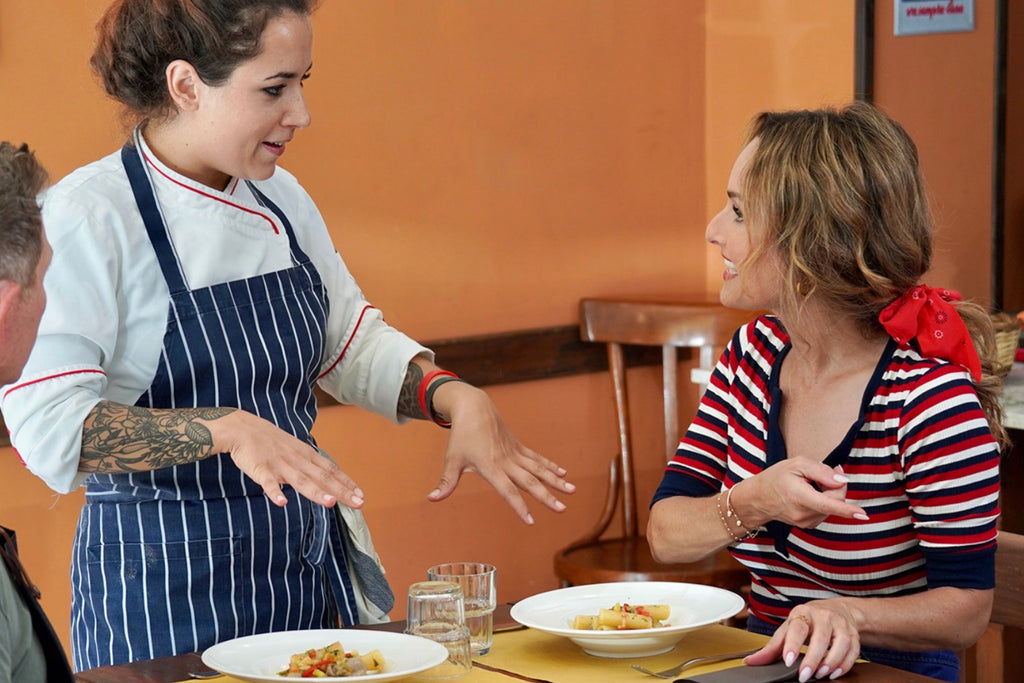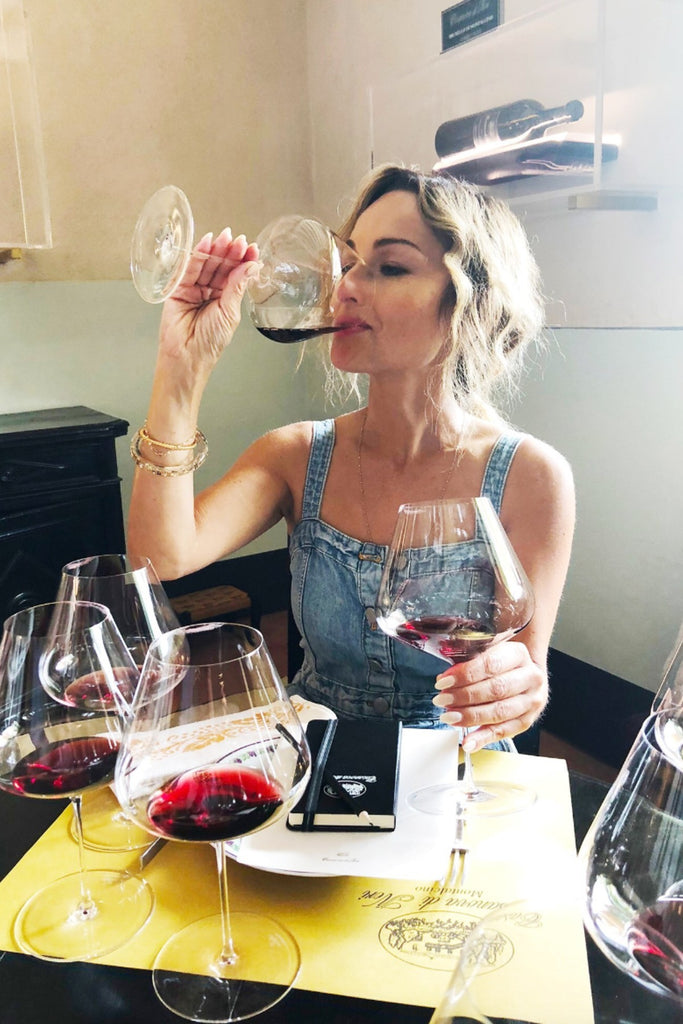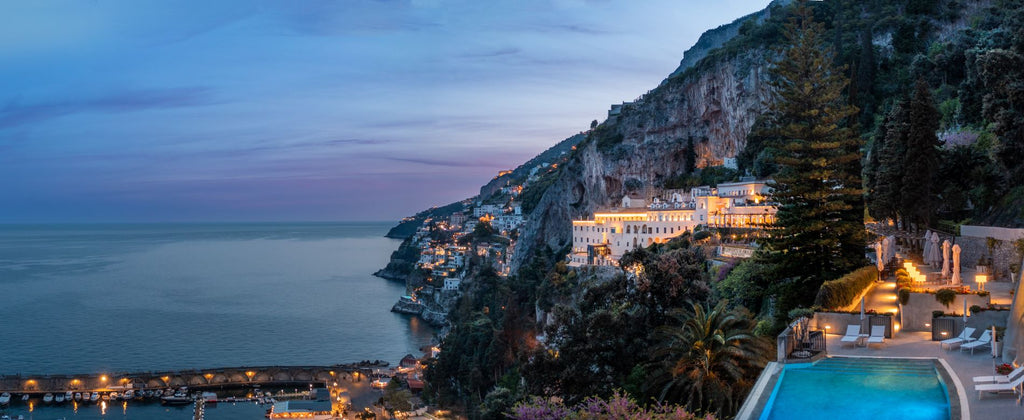Giada explains the meaning behind these common Italian restaurant terms.
We’re always dreaming of our next vacation in Italy—or reminiscing about our last one—while we curate our Giadzy travel guides. When we’re researching restaurants (the most important part of any Italian vacation!) or just walking through town, we’ve noticed that many establishments include a term like trattoria, osteria, or ristorante in their name.
It’s not always clear exactly what those words mean or how they can help when you’re deciding where to eat, so we turned to our resident expert on all things Italy and restaurants. Here, Giada breaks down the difference between the most common types of restaurant you’ll find in Italy.
Back in the day, there used to be very clear lines between the different kinds of restaurants in Italy, but you’ll find that it’s all gotten a little blurry lately. The Italian restaurant industry has finally started to embrace creativity, and you can see it both in the food itself and the language that gets used. (Massimo Bottura’s Osteria Francescana, which serves a very intellectual tasting menu instead of the rustic food its name would suggest, is a perfect example!)
That said, there are some general definitions that can guide you when you’re trying to choose a place to eat in Italy, especially when you’re looking at older businesses that have been around for a few generations.
 Your most casual option is usually going to be an Osteria, which serves traditional local foods. You’re likely to see communal touches like chalkboard menus and shared tables at an osteria—that’s a hint at their history. Hundreds of years ago, osterias were inns that offered overnight rooms for travelers and a casual space to drink wine and have a few simple snacks. Over time, most osterias have expanded their food service to become more like a no-frills restaurant.
Your most casual option is usually going to be an Osteria, which serves traditional local foods. You’re likely to see communal touches like chalkboard menus and shared tables at an osteria—that’s a hint at their history. Hundreds of years ago, osterias were inns that offered overnight rooms for travelers and a casual space to drink wine and have a few simple snacks. Over time, most osterias have expanded their food service to become more like a no-frills restaurant.

Another casual option is one that tends to confuse American travelers: the Bar. I’m often asked why Italian bars are open early in the morning! What Italians call a bar is more like what we’d call a café, and it’s the place to go for your morning cappuccino and pastry, or to pop in for an espresso whenever you need a caffeine boost. That said, they do also serve alcohol, and starting in the afternoons you can come to a bar for a spritz, negroni, or other classic cocktail for an afternoon break.
 One of my favorites is the Trattoria, which is usually a family-run restaurant that serves typical regional foods. Trattorias are comfortable and tend to be pretty reasonably priced, though that doesn’t mean you can just walk in off the street! Many good trattorias have dedicated fans and regulars that pack the house every night, so it’s best to call ahead for a reservation. If you’re looking to try the most authentic local dishes in the place you’re visiting, a trattoria is a good choice.
One of my favorites is the Trattoria, which is usually a family-run restaurant that serves typical regional foods. Trattorias are comfortable and tend to be pretty reasonably priced, though that doesn’t mean you can just walk in off the street! Many good trattorias have dedicated fans and regulars that pack the house every night, so it’s best to call ahead for a reservation. If you’re looking to try the most authentic local dishes in the place you’re visiting, a trattoria is a good choice.
 If you’re interested in learning more about Italian wines in general or if you’re in a region with an amazing wine culture like Piemonte, check out an Enoteca. These have an emphasis on wine and usually serve snacks and small bites meant to nibble on while you sip. Servers at enotecas tend to be super knowledgeable about wine and love to educate and give suggestions.
If you’re interested in learning more about Italian wines in general or if you’re in a region with an amazing wine culture like Piemonte, check out an Enoteca. These have an emphasis on wine and usually serve snacks and small bites meant to nibble on while you sip. Servers at enotecas tend to be super knowledgeable about wine and love to educate and give suggestions.
 Finally, the most traditionally high-end type of establishment is the Ristorante. While the word “restaurant” is a neutral term in English, in Italy it has traditionally indicated a very refined dining experience. These days you’ll see many Michelin-starred, tasting menu restaurants that have opted out of this naming tradition, but a generation ago, “ristorante” was used to describe a white tablecloth, sommelier and maître d’ on staff, and all those extra fancy touches. If you see a business using the term now, you can expect a slightly old-fashioned but refined meal.
Finally, the most traditionally high-end type of establishment is the Ristorante. While the word “restaurant” is a neutral term in English, in Italy it has traditionally indicated a very refined dining experience. These days you’ll see many Michelin-starred, tasting menu restaurants that have opted out of this naming tradition, but a generation ago, “ristorante” was used to describe a white tablecloth, sommelier and maître d’ on staff, and all those extra fancy touches. If you see a business using the term now, you can expect a slightly old-fashioned but refined meal.















0 comments